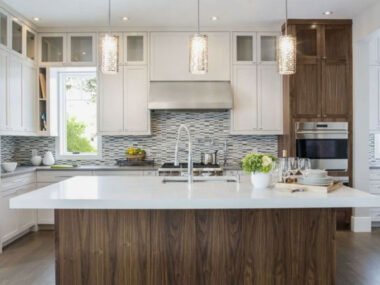A kitchen is more than just a place to prepare meals—it’s the heart of the home, where health and wellness begin. As more homeowners prioritize well-being, kitchen design has evolved to include smart features that promote a healthier lifestyle. From advanced water filtration systems to high-tech cooking appliances, today’s kitchens are being reimagined as wellness spaces that support better nutrition, air quality, and overall hygiene.
A key element of this transformation is the growing popularity of smart kitchen technology. Homeowners are now seeking out upgrades that go beyond aesthetics, incorporating features that improve convenience while also enhancing health. Whether it’s a system that ensures the cleanest drinking water, air purification units that reduce pollutants, or non-toxic materials that make food preparation safer, modern kitchens are being designed with wellness in mind.
The Rise of Wellness-Focused Kitchen Design
Kitchen renovations have traditionally focused on style, but in recent years, functionality has taken center stage. People are realizing that their kitchen environment plays a significant role in their health, from the quality of the air they breathe to the water they drink and the surfaces they prepare food on.
One of the biggest trends in kitchen design is the integration of non-toxic and sustainable materials. Many traditional kitchen surfaces, such as countertops and cabinetry, contain chemicals like formaldehyde and volatile organic compounds (VOCs) that can impact indoor air quality. More homeowners are now opting for sustainable alternatives such as quartz, bamboo, and recycled glass, which are not only eco-friendly but also free from harmful substances.
Additionally, lighting has become a crucial aspect of wellness-centered kitchen design. LED lighting systems with adjustable color temperatures are being installed to mimic natural daylight, helping to regulate circadian rhythms and improve overall well-being. Some homeowners are even incorporating smart lighting that shifts throughout the day to create an environment that promotes energy in the morning and relaxation in the evening.
A Kitchen Designed for Health and Sustainability
Incorporating health-conscious features into a kitchen isn’t just about personal wellness—it also supports environmental sustainability. Many of the smart appliances available today are designed to reduce energy consumption, helping homeowners lower their carbon footprint while maintaining a high level of convenience.
There is a growing movement toward sustainability in home design. This shift extends beyond the kitchen, with more people seeking energy-efficient solutions throughout their homes. Kitchen upgrades that align with this trend include composting systems, smart recycling bins, and even hydroponic herb gardens that allow homeowners to grow fresh produce indoors.
Smart Appliances for a Healthier Kitchen
Technology has transformed how people cook and store food, with a wave of smart appliances making kitchens more efficient and health-conscious. Refrigerators now come with advanced sensors that track expiration dates, helping reduce food waste while ensuring fresh, nutritious meals. Some models even offer built-in water filtration systems that improve drinking water quality.
Induction cooktops have also become a popular addition to modern kitchens. Unlike traditional gas stoves, induction cooking eliminates harmful gas emissions that can negatively affect indoor air quality. These stoves also provide more precise temperature control, reducing the risk of burning food and creating carcinogenic compounds.
Steam ovens are another appliance that is gaining popularity, as they allow for healthier cooking methods that preserve nutrients without the need for excessive oils. These ovens use steam instead of dry heat, which helps retain the natural flavors and vitamins in vegetables, fish, and other delicate foods.
Water Filtration and Ionization for Better Hydration
Clean drinking water is one of the most essential aspects of a healthy kitchen. With concerns over water quality increasing, more homeowners are investing in advanced filtration systems to ensure that the water they consume is free from contaminants.
One of the most innovative solutions in this area is the use of water ionizers, which not only filter out impurities but also alter the pH level of water. These systems produce alkaline water, which some believe offers potential health benefits, such as improved hydration and antioxidant properties. While research is ongoing, many people prefer ionized water as part of a holistic approach to wellness.
For those looking for a broader approach to water purification, reverse osmosis systems remain a popular choice. These systems remove a wide range of contaminants, including heavy metals and chlorine, providing pure, clean drinking water for the entire household. Some high-end kitchen designs now include built-in water filtration as a standard feature, recognizing its importance in daily hydration and cooking.
Air Quality and Hygiene Upgrades
Another major focus in modern kitchen design is improving indoor air quality. Given that the kitchen is a high-traffic area where cooking fumes, allergens, and bacteria can accumulate, many homeowners are seeking solutions that keep the air clean and fresh.
Range hoods with advanced filtration technology are now being installed in many kitchens to reduce airborne pollutants caused by cooking. High-efficiency particulate air (HEPA) filters and activated carbon filtration systems can help remove cooking smoke, odors, and fine particles that contribute to poor indoor air quality.
Air purifiers are also making their way into kitchen spaces, particularly in open-concept designs where cooking odors can linger throughout the home. These devices can capture dust, allergens, and volatile organic compounds, creating a cleaner environment for food preparation and dining.










